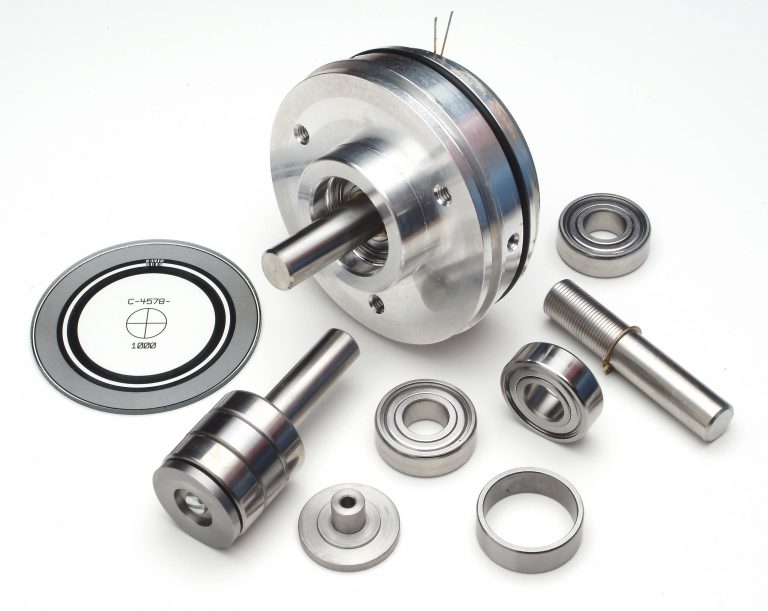 From robotics to heavy-duty industrial machinery, optical encoders are critical components in motion control. Choosing the correct bearing for use in an encoder is an important design consideration to promote performance and operating life. This decision requires engineers to take a number of variables into account, including loads, shock, vibration, accuracy requirements and environmental conditions.
From robotics to heavy-duty industrial machinery, optical encoders are critical components in motion control. Choosing the correct bearing for use in an encoder is an important design consideration to promote performance and operating life. This decision requires engineers to take a number of variables into account, including loads, shock, vibration, accuracy requirements and environmental conditions.
A strong foundation for an encoder starts with the shaft/bearing, or encoder spindle, assembly on which the rotating hub and disc (or codewheel) sit. Proper bearing selection is a necessity for a sound design. High levels of mechanical and electrical stability are necessary functions for encoder accuracy.
Without this stability, disc patterns will be skewed and the resulting signal will be inaccurate. In order to avoid encoder transitional errors, which are cause by occurrences such as wobbling and eccentricity, bearings need to maintain accurate rotation of the disc. With respect to accuracy, while design decisions are critical, it should be noted that reduction of variability within the encoder manufacturing process also plays a key role.
Encoder specifications can be categorized as electrical, mechanical and environmental, although primarily a mechanical component, the bearings selected have impact on performance in all three areas.
Electrical specifications include cycles per shaft turn, resolution, voltage/output, output format, mating connector type and others.
Mechanical specifications include runout, starting torque, running torque, maximum RPM, life versus speed/load, and shaft size. Materials for the enclosure, shaft and sometimes disc are specified as well.
Environmental specifications include temperature, shock, vibration and humidity. An enclosure rating, NEMA (National Electrical Manufacturers Association), is also specified. Industrial applications present all types of environmental hazards – moisture, dirt, cold, hot, corrosive and even explosive. In medical or food processing applications, equipment is subject to wash down conditions, often with harsh chemicals. Equipment in outer space faces temperature extremes and vacuum.
For part II, mechanical specifications, click here
Need assistance on bearing choices for encoders, or any other application? Our bearing experts and engineers are ready to help, contact them here.

